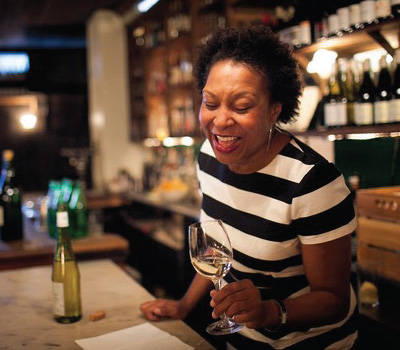It’s a brave new world for the restaurant industry. Faced with rising minimum wages, a longstanding discrepancy between front-of-house and back-of-house earnings, and a desire to retain talent in both areas, restaurants across the country are implementing various forms of revenue sharing and higher hourly rates in place of that particular American institution: tipping your server.
Restaurant management also sees eliminating tipping as a way of encouraging the professionalism of servers and sommeliers, by emphasizing other, more long-term incentive structures. The movement is significant, driven by industry leaders such as Danny Meyer and Andrew Tarlow in New York, and Tom Douglas in Seattle.


But what effect, exactly, will this have on wine programs?
Internally, the shift in pay structure will certainly affect sommeliers and wine directors. At NYC fine dining icon Eleven Madison Park, which went tipfree as of January 1, sommeliers will go from taking part in the tip pool to an hourly wage. “You have to believe in service and hospitality to be at EMP. Those things aren’t tied to your wage,” says wine director Cedric Nicaise.
Sommeliers at The Modern, part of Danny Meyer’s Union Square Hospitality Group, will be paid according to how long they have been with the company. “As people educate themselves and become more valuable to the team, they’ll be able to earn a larger share of the revenue,” says John Ragan, wine director for all the USHG restaurants, including Gramercy Tavern, The Modern and Marta. Familiarity with the cellar, and the ability to satisfy guests—not necessarily by up-selling, but rather by providing them with the right bottle—will ultimately move sommeliers up the seniority ladder, and lead to higher pay.
From a guest perspective, one immediate result of moving to no tipping is a rise in menu prices for wine as well as food, to make up for lost tip revenue. Still, wine directors are looking for ways to lessen the blow. The tasting menu at EMP will go from $225 per person to $295; wine prices, meanwhile, will be raised on a “sliding scale depending on the wine,” says Nicaise. The middle of the menu, already where the greatest mark-up lies, will see more prices rising, he says.
Guests at restaurants like EMP, at the highest echelons of fine dining, may not be terribly sensitive to price increases, and Nicaise expects that buying patterns will remain the same. But not all restaurants can count on clients spending as much as they do at EMP. For Lee Campbell, the hunt for deals has taken on more urgency. “If anything, it’s my job now to buy wine as efficiently as possible, and find every deal I can,” she says. In any case, how individual guests will respond to the inevitable price increases will partly depend on how much they’re used to tipping on a bottle of wine. The average tip, according to an informal survey of sommeliers working in fine dining, seems to be around 15 to 20 percent for moderately priced bottles of wine, with that percentage declining as the bottle price rises. In the case of particularly special wines, it’s not uncommon for guests to tip the somm directly, in cash.
At Park Kitchen and Bent Brick in Portland, Oregon, one side effect of moving away from tipping has been a reconsideration of how to structure a restaurant. Chef Scott Dolich is instituting a cross-training system to teach front of-house staff kitchen skills, and back-of-house staff hospitality. The cross-training position will involve only cooks and servers (not dishwashers, for instance) and will pay $14 an hour—a “net increase for cooks, and a break-even for servers,” says Dolich.
Park Kitchen’s wine director, Chad Fasenmyer, cites rising minimum wage as a motivator. “We knew that a minimum wage [increase] was going to be voted on, and pass. For a small restaurant, that pay increase would be difficult to absorb, and also we were concerned about the discrepancy between front and back of house.” Wine sales make up half the revenue at Park Kitchen, and Fasenmyer will have to step up his education efforts during the cross-training period, so that everyone on staff is well-versed on the list. But he thinks that having cooks on the floor could be advantageous, as intimate knowledge of the food can only be helpful when it comes to finding a wine pairing.
“It’s important that a restaurant culture values people who sincerely want to make other people happy—not just people chasing the dollars of one lucrative night,” says Ragan. He says that sta at The Modern, where “Hospitality Included” has been in effect since November 2015, have shown nothing but enthusiasm for the change—but obstacles may arise. “Danny [Meyer] often talks about getting o this drug we call tipping,” he says. “As backwards as the tip pool is, if it’s what you’re used to, there’s something challenging about stepping outside of that.”
This story was featured in W&S April 2016.
A former restaurant server, Rachel Signer knows firsthand the challenges of working for tips. She is now a Brooklyn-based writer, focused on food and wine.
This story appears in the print issue of April 2016.
Like what you read? Subscribe today.















